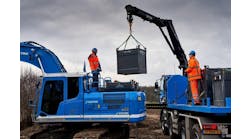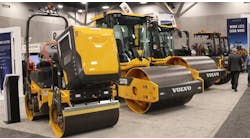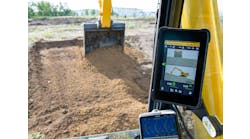NCCCO and NSC Publish New Report on Safety Hazards in the Crane Industry
Work at height, vehicle-pedestrian interactions, and loading and unloading materials topped the hazards crane operators are exposed to according to a study by The National Commission for the Certification of Crane Operators (NCCCO) Foundation and the National Safety Council (NSC). The organizations, through NSC’s Work to Zero initiative partnered to survey certified crane operators and inspectors regarding safety hazards in the crane industry.
The goal was to identify the most common hazardous situations these workers are exposed to, the main causes and contributors to workplace injuries, and to understand their use and perceptions of safety technology solutions used to eliminate or mitigate these risks. The results of the survey are now available in the newly released report, Understanding the Current State of Safety Hazards in the Crane Industry.
“The NCCCO Foundation welcomed the opportunity to work with the National Safety Council on a research project that we believe will have a positive impact on the safety of everyone working in and around cranes,” said T.J. Cantwell, NCCCO Foundation Executive Director. “The National Safety Council’s research expertise combined with the NCCCO Foundation’s knowledge of the crane industry allowed us to design a survey that resulted in a significant amount of new and useful data on the hazards that face those in the industry every day.”
The NCCCO Foundation intends to share the report’s findings throughout the year and focus its safety education outreach on the top hazards identified in the report. Educational materials, webinars, and other resources designed to increase awareness and improve safety in the crane industry will be available soon.
The report includes findings regarding the top hazardous situations, most common risks, most common causes of injuries, perceptions of safety training and compliance, and use of safety technology in the crane industry. The full report is available on the NCCCO Foundation website at http://www.ncccofoundation.org/research/safety/.
Key Findings
1. Survey participants reported work at height, vehicle-pedestrian interactions, and loading and unloading materials as the hazardous situations they were most likely to be exposed to when on the job. Between 55 percent and 89 percent of participants said they were likely or very likely to be exposed to these hazardous situations. In 2020, NSC found these three hazardous situations resulted in 30 percent of non-roadway occupational fatalities.
2. The two most common situational risks directly causing injuries were falls from height and being struck by a falling object, both of which are part of OSHA’s Focus Four Hazards.
3. The two most common systemic risks contributing to injuries were heat stress and fatigue. These risks were also considered to be some of the most likely exposures reported by participants.
4. More than 80 percent of survey participants believe they have access to appropriate safety training before starting a task, but lack of proper training still accounted for 7 percent of personal injuries and 8 percent of site injuries.
5. Overall, the use of safety technology is fairly low. Depending on the specific type, only 1 to 13 percent of participants reported currently using technology at the job sites where they are working. The most commonly used technologies were proximity sensors, wearables for vital signs monitoring and drones.
6. Despite low use rates, survey participants’ responses indicated a general willingness to try new safety technology solutions. Common responses regarding potential benefits described improved safety, reduced blind spots, and the ability to alert both workers and others of job site hazards. One of the most frequently reported barriers to using safety technology was concern over data privacy.






